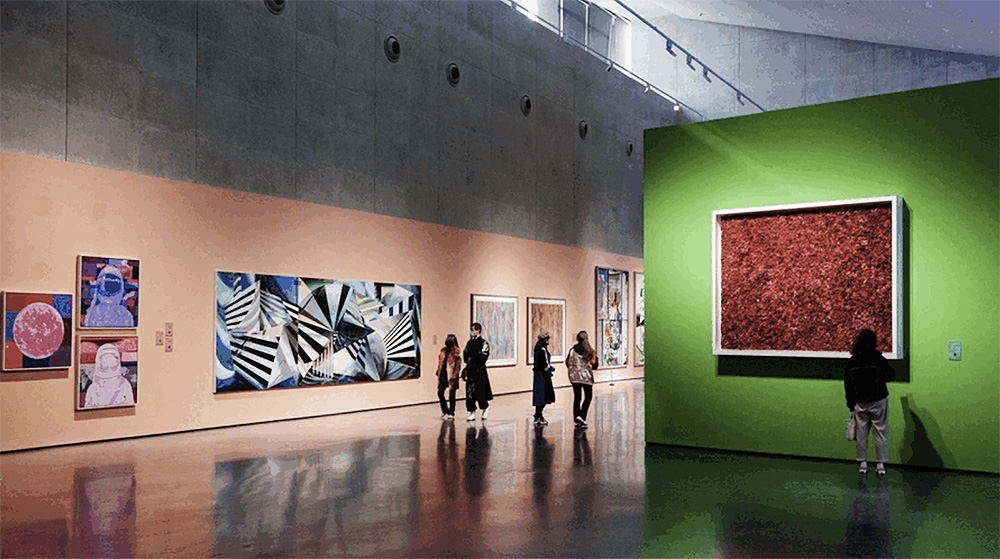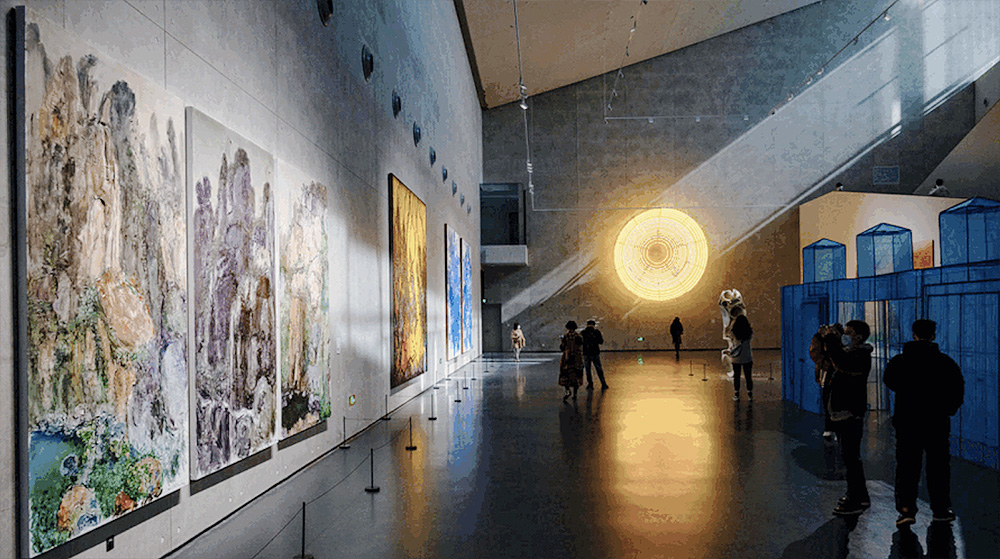On November 6, the 2021 Chengdu Biennale was launched at the newly opened Chengdu Tianfu Art Museum and Chengdu Museum of Contemporary Art, located within the city’s Tianfu Art Park. Themed “SUPER FUSION” — as in the merging of the past and present, tradition and modernity, local and global — the fifth edition of the fair features at least 20 exhibitions with more than 500 works on display, bringing together some 272 artists spanning continents and disciplines.
Set to run until April 6, 2022, the event aims to underscore Chengdu’s rich and diverse art milieu, acting as a catalyst for the city’s growth as a cultural capital. As Lu Peng, the art historian who serves as Director of Chengdu Biennale’s academic committee, tells Jing Culture & Commerce, the participation of local curators and artists in the fair illustrates “the vitality and strength of Chengdu’s art scene.” And in fact, the fair “surpasses other cities in terms of scale, format, and influence.”

The fifth edition of the fair leads with the theme “SUPER FUSION” to highlight the fusion of local and global, tradition and modernity in its exhibits. Image: Chengdu Biennale
Indeed, the fair doesn’t lack scope or ambition, being one of China’s largest-scale biennales in the post-COVID era. Below, Lu elaborates on how the Chengdu Biennale might help spur artistic conversations as much as the city’s cultural profile.
How do you see the Biennale’s role in growing Chengdu’s art ecosystem and China’s cultural landscape?
My best prediction is that it will spur cultural competition between cities. The Chengdu Municipal Government hopes to build Chengdu into an international cultural city, and the influence of this Biennale is very extensive. In my opinion, if the Chengdu Biennale is sustainable, it will stimulate other cities to compete in the field of culture and art, and promote the development of culture and art in this country.
The Biennale is held at two new museums within the Tianfu Art Park — how does the location add to the fair’s visitor experience?
Obviously, the government is thinking about connecting art with a beautiful environment. Such a plan blends art with the park environment, making visitors feel comfortable with everything here — they can enter the park to view the art, but also enjoy the ambience. I believe this format can serve as a good reference for other cities.


Installation views of the themed exhibition at the 2021 Chengdu Biennale. Images: Red Star News
With regards to audience outreach, how is the fair balancing its higher academic values with that of accessibility?
There is a lack in the general public’s level of awareness of contemporary art. However, one of the characteristics of contemporary art is that it’s completely open to interpretation, allowing the audience and the artist to propose their own understanding of the work, making it multifaceted and multi-dimensional. The exhibition design (the spatial relationship between works, sound, lighting, and formal tensions) should create an open space to invite the audience’s participation, inviting them to use their imagination and knowledge, which will greatly reduce the distance between the academic and the popular.
In addition to onsite activities, how did the Biennale team use online platforms in the planning, promotion or actual execution of the event?
The Internet has allowed the Chengdu Biennale to spread quickly around the world, demonstrating that today’s art production and consumption are based on the Internet and other technologies. We found that short videos played a vivid and intuitive role in promoting the exhibition. Today’s new technologies and their applications make the production of images and information more nimble and convenient.
Art and technology are becoming increasingly fused. How is the Chengdu Biennale highlighting this relationship?
This can be seen in the “Intelligent Resonance” section of the Biennale. The works in this section illustrate the impact of new technology on art, and how technology opens up possibilities beyond traditional art. In daily life, new technologies have given us a full view of the future of mankind, and similarly, the application of new technologies by artists in this exhibition also enables visitors to “see” this future.
Translated by Min Chen



